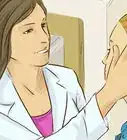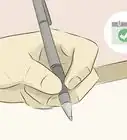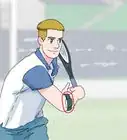This article was co-authored by Joel Giffin, PT, DPT, CHT. Dr. Joel Giffin is a Doctor of Physical Therapy and the Founder of Flex Physical Therapy in New York, New York. With over 15 years of experience as a Certified Hand Therapist (CHT), Dr. Giffin treats the whole body and specializes in rehabilitation of the hand and upper extremities. He has treated Broadway theater performers backstage at shows such as The Lion King, Sleep No More, Tarzan, and Sister Act. Flex Physical Therapy also specializes in occupational and pelvic floor therapy. Dr. Giffin earned his Master’s degree in Physical Therapy with honors from Quinnipiac University and received his Doctor of Physical Therapy (DPT) degree with distinction from Simmons College. He is a member of the American Physical Therapy Association and the American Society of Hand Therapists.
There are 9 references cited in this article, which can be found at the bottom of the page.
This article has been viewed 147,514 times.
Handedness is a common trait in primates, and has been for millions of years. [1] [2] It has long fascinated humans. Somewhere between 70 to 90 percent of humans are right handed, while almost all of the remaining are left handed, and a smaller percentage still are ambidextrous [3] . Handedness is not a unidimensional trait, relying on one gene, skill, or brain structure to determine it, but rather a series of independent lateralized adaptations to specific tasks [4] .
Steps
Writing and Drawing
-
1Practice holding a writing instrument. A stylus, a pencil, a pen, even a chopstick (with its similar approximate shape) will do. Make a note of which hand felt most comfortable holding the object.
-
2Write a sentence. Write a sentence using one hand on a pad. Once finished, write the same sentence using your other hand. Make a note of which hand you were using when you wrote the clearer version of the sentence.
- When choosing a sentence to write, use copy that you haven’t written before.
- Remember that people are often forced to choose a specific hand to write with when young so you may naturally prefer one hand but use your other hand for writing if that is the way you were taught.
Advertisement -
3Draw several figures. Pick a hand and draw a circle, a square, and a triangle. Draw the same shapes with your other hand. Compare your drawings, and make a note of which hand produced clearer lines and more accurate shapes.
Completing Manual Activities
-
1Pick something up. Find several objects and place them directly in front of you. Pick it up, without consciously choosing a hand. This step will likely require several repeats over a period of time to erase accidental bias. Take note of which hand was used more frequently.
-
2Use eating utensils. Try bringing food to your mouth with an eating utensil, alternating using each hand. Make a note of which hand you use to bring food to your mouth most successfully, and if that preference changes depending on which utensils you are using (fork and knife, chopsticks, fork, spoon). Since most utensils do not have a hand-bias and are simple to operate, you will want to repeat this test until a preference is clear.
-
3Color a drawing. Make sure it is a relatively easy figure to draw, but that still requires some fine motor skills to fill in within the lines. Make a copy of the drawing and color each with a different hand, aiming to stay within the lines. Make note of which hand you felt the most ease with.
-
4Cut shapes out of a piece of paper using a non-handed pair of scissors. Using scissors designed for right or left-handed people will skew your results and you should seek out a proper pair of scissors. Cut shapes such as circles and triangles and squares with each hand and compare. [5]
-
5Have a catch. At either a target or a catcher, throw the ball and determine how effective each arm is at aiming and speed. If you have a catcher, when the ball is returned, make note of which hand you catch with. You will want to repeat several tosses to determine your accuracy and speed, as well as which hand works best at catching.
Concluding Which Hand is Dominant
-
1Make a list of which hand you preferred in each test. Tally the number of times you used each hand in writing and drawing. Do the same for other manual activities, and take a total.
-
2The hand you predominantly used in writing and drawing will often be how you identify which handedness you have, as it is the most socially relevant, apparent, and distinctive activity impacted by handedness. Your other activities will give you an impression of your overall left or right-handedness. Which hand you identify as your dominant intuitively is likely to be your overall dominant hand, even if you write with the opposite hand. [6]
-
3Look to see if the number of times you used each hand is equivalent or very close in number. If so, you are likely mixed-handed. You are truly ambidextrous if there was little to no difficulty or change in outcome from changing hands in the other activities. Standards of what defines being left or right handed are subjective, and it is not as simple as favoring a majority of tasks with one hand. [7]
Warnings
- Be careful when using the scissors that you do not cut yourself. Avoid buying scissors made for one type of hand, this will significantly increase the risks of using scissors with the opposite hand.⧼thumbs_response⧽
- Be cautious when playing catch so as to avoid injury or arm strain. If you are throwing too wild with one arm, it is likely not your dominant hand in that activity.⧼thumbs_response⧽
Things You'll Need
- Pencil, pen or stylus
- Ambidextrous scissors
- Paper
- Ball
- Eating utensils
Expert Interview

Thanks for reading our article! If you'd like to learn more about the dominant hand, check out our in-depth interview with Joel Giffin, PT, DPT, CHT.
References
- ↑ http://www.sciencedirect.com/science/article/pii/S0047248485800877
- ↑ http://www.ncbi.nlm.nih.gov/pubmed/23955015
- ↑ http://www.scientificamerican.com/article/why-are-more-people-right/
- ↑ http://www.sciencedirect.com/science/article/pii/S0010945286800314
- ↑ http://faculty.washington.edu/chudler/rightl.html#dot
- ↑ http://www.sciencedirect.com/science/article/pii/0278262687901187
- ↑ http://www.scientificamerican.com/article/why-are-more-people-right/
- ↑ www.tandfonline.com/doi/abs/10.1080/14640746708400109#preview
- ↑ http://www.tandfonline.com/doi/abs/10.1080/08856559.1947.10533403?journalCode=vzpg20#preview

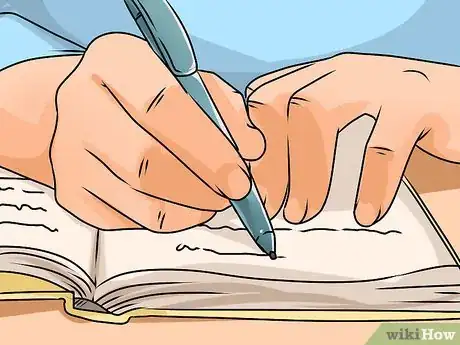
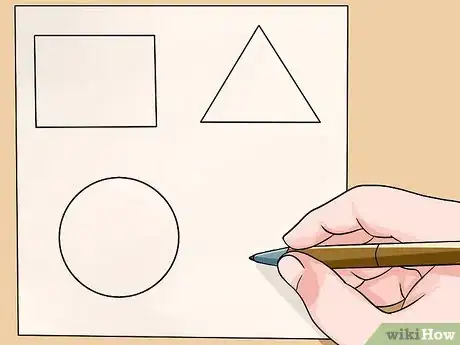





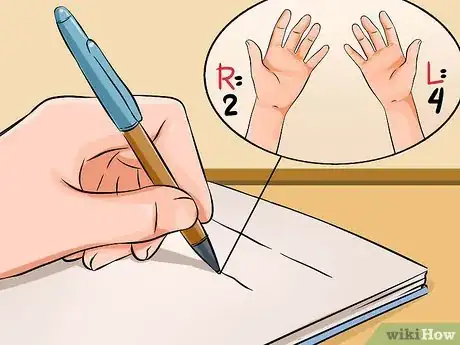

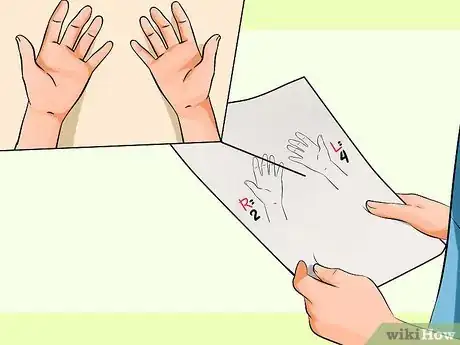
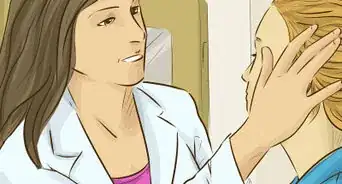

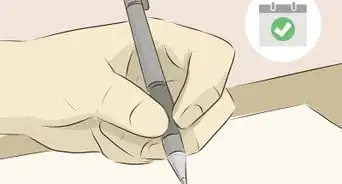
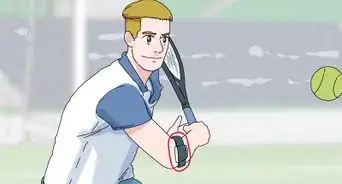
-Step-15-Version-3.webp)
















